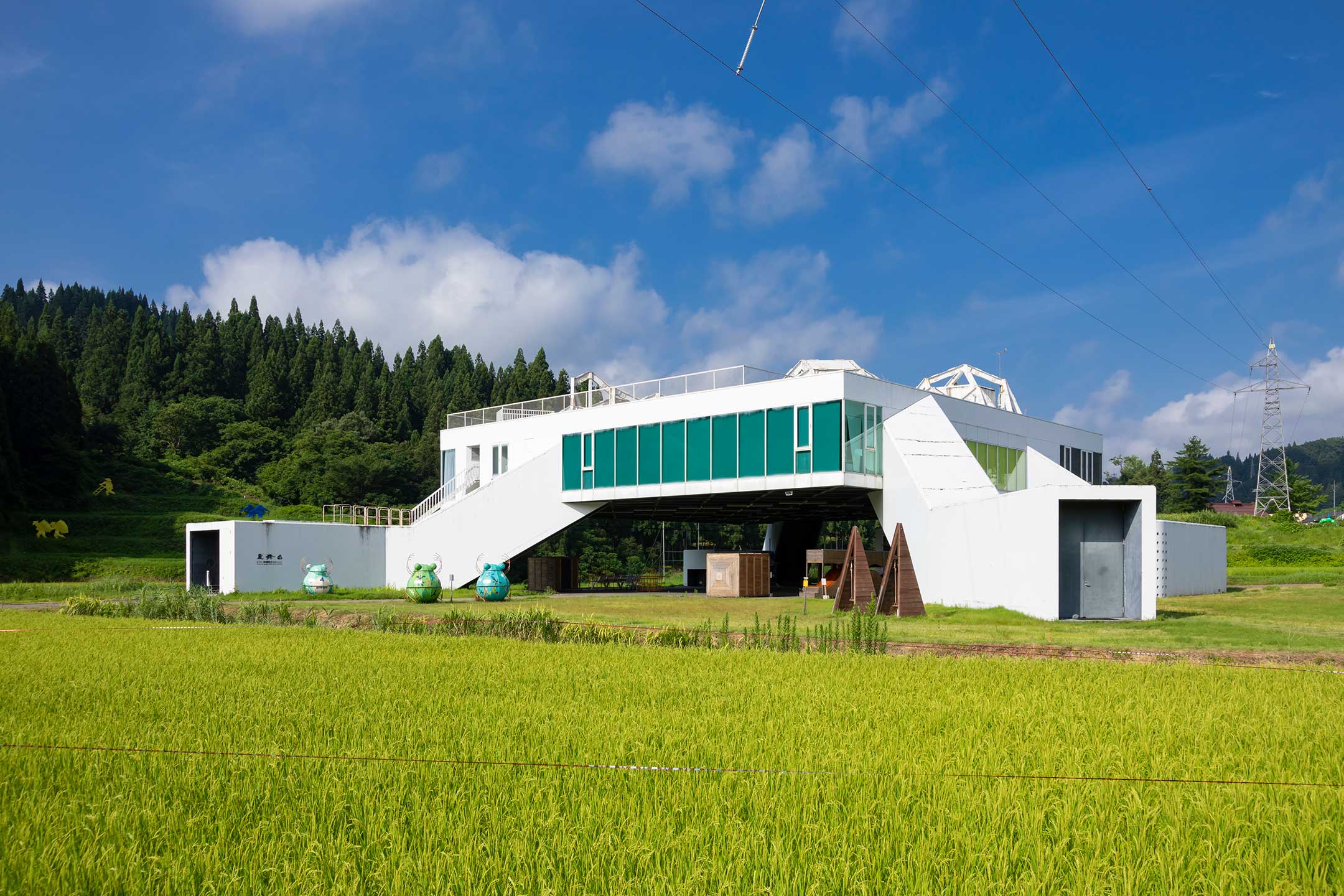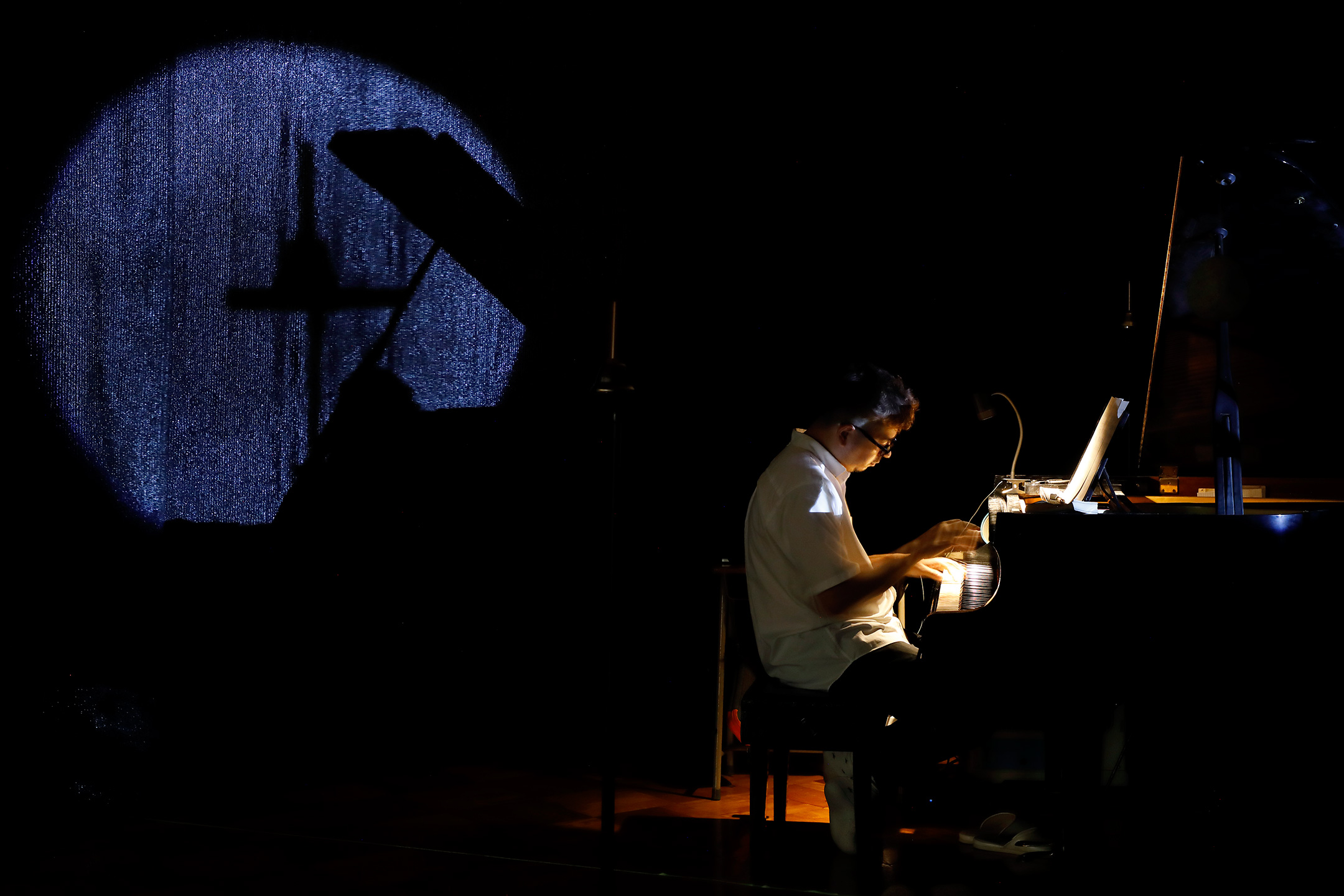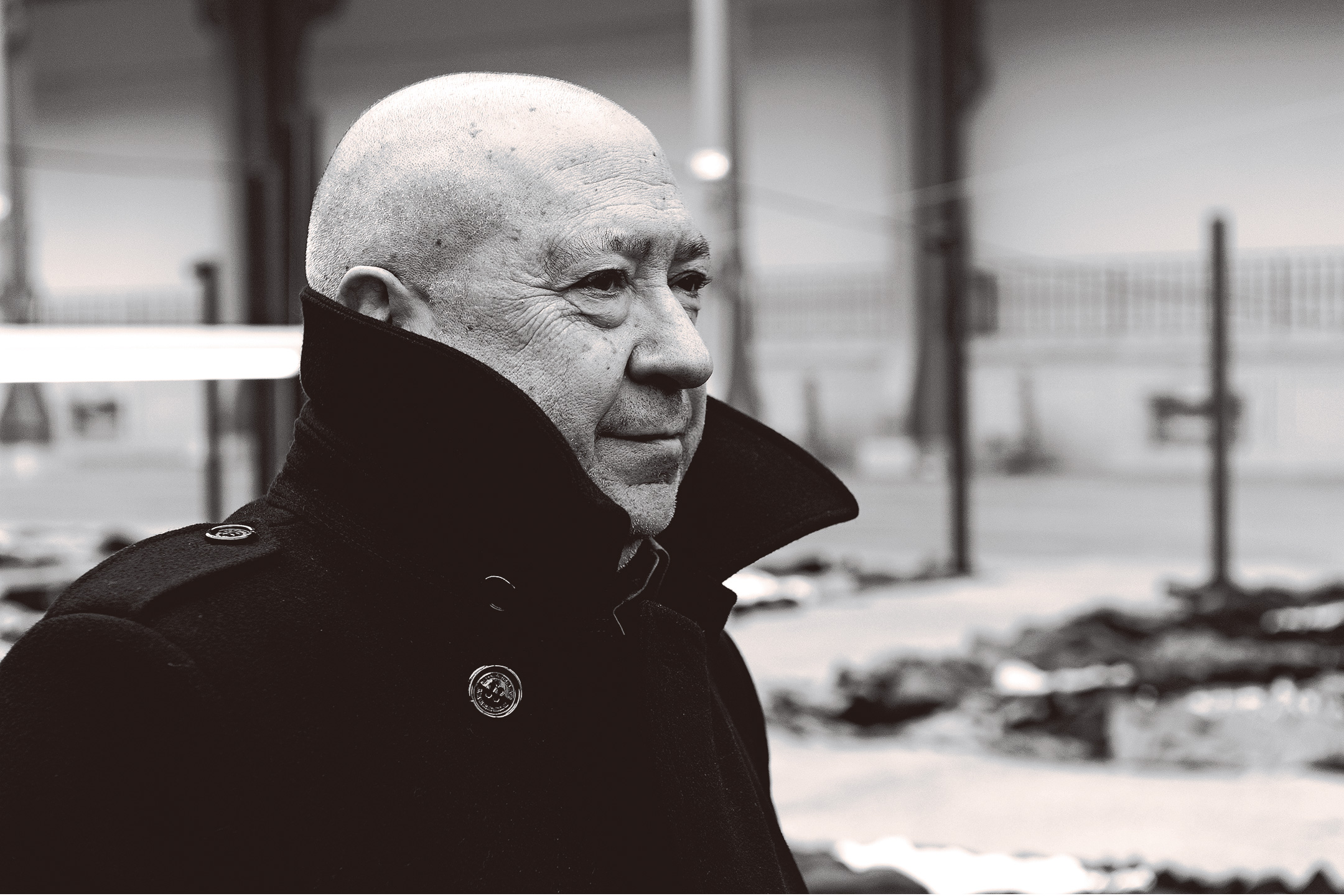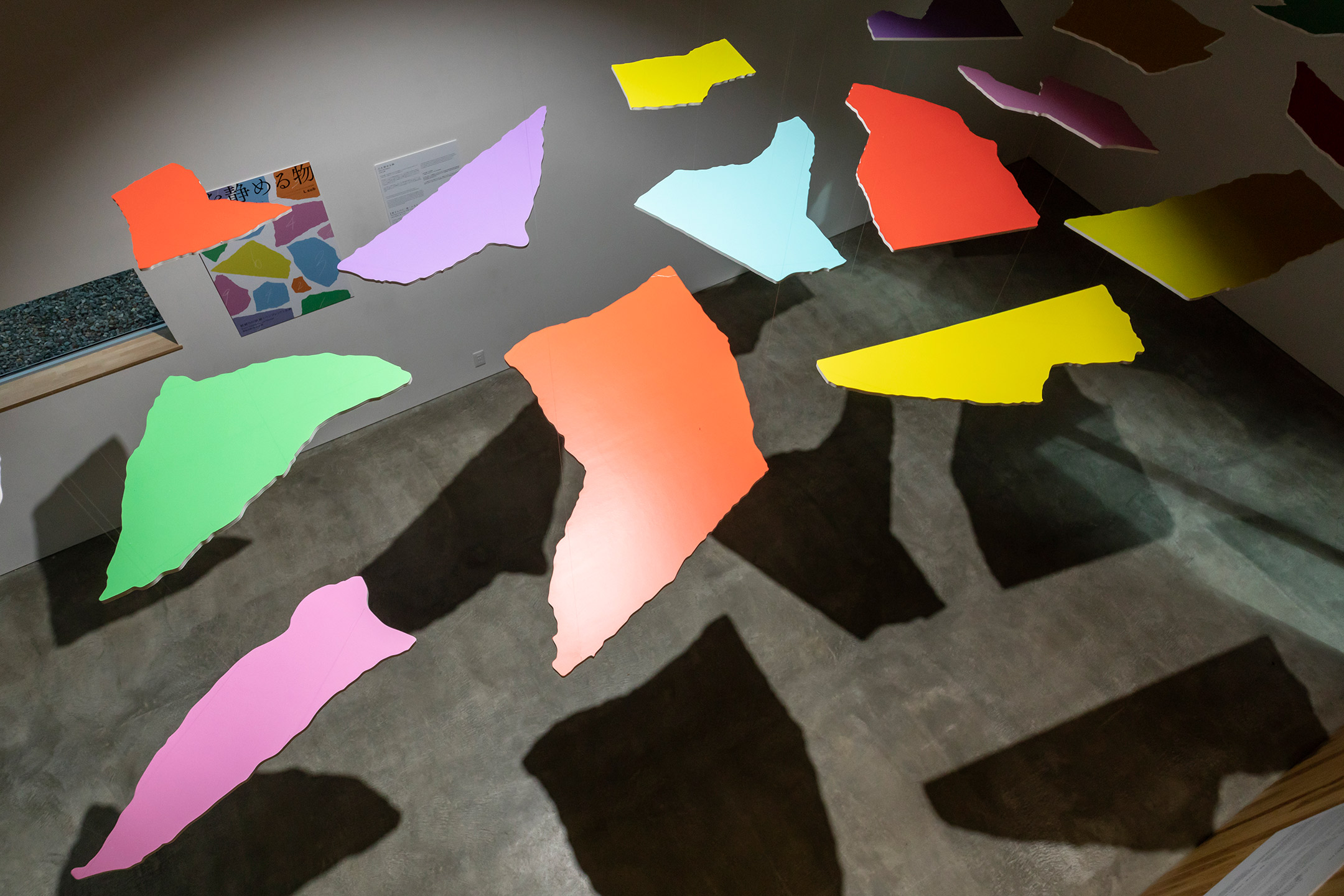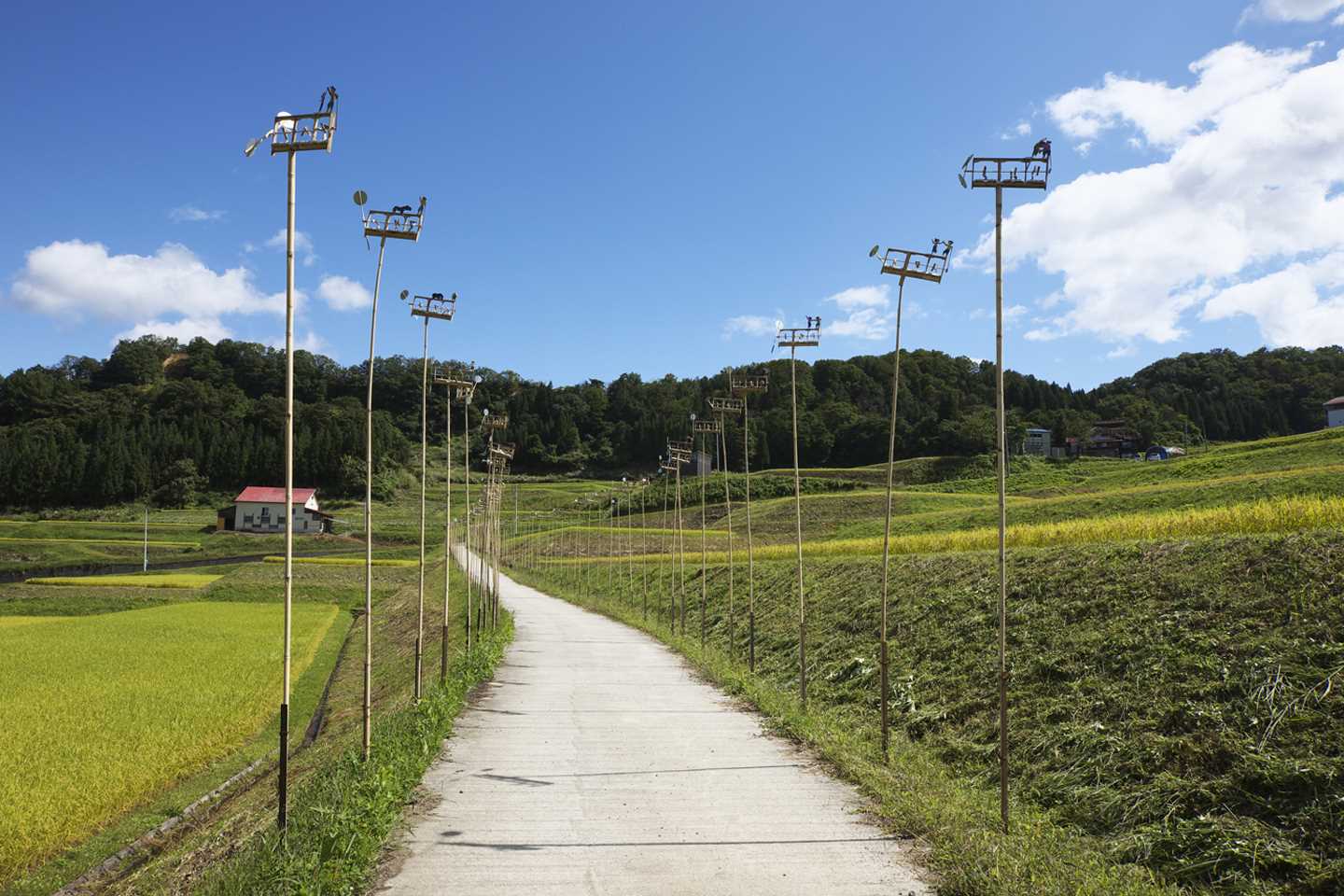
About the artwork
Seeing the rice terraces of Echigo-Tsumari, the artist remembered his home in Indonesia and chose rice fields as the site for his installation. To the artist, rice fields have two contradictory implications—peacefulness, reminding him of his hometown, and anger at the conflicts of the 60s which made the Balinese people suffer. Behind the peaceful beauty symbolized by rice fields lie various drama; that is the message contained in this work. The traditional windmills made by Balinese farmers blended into the scenery of rice terraces, making fresh and cheerful sounds in the breeze of Tsumari.
Information
| Artwork no. | N036 |
|---|---|
| Production year | 2006 |
| Area | Nakasato |
| Village | Seidayama |






